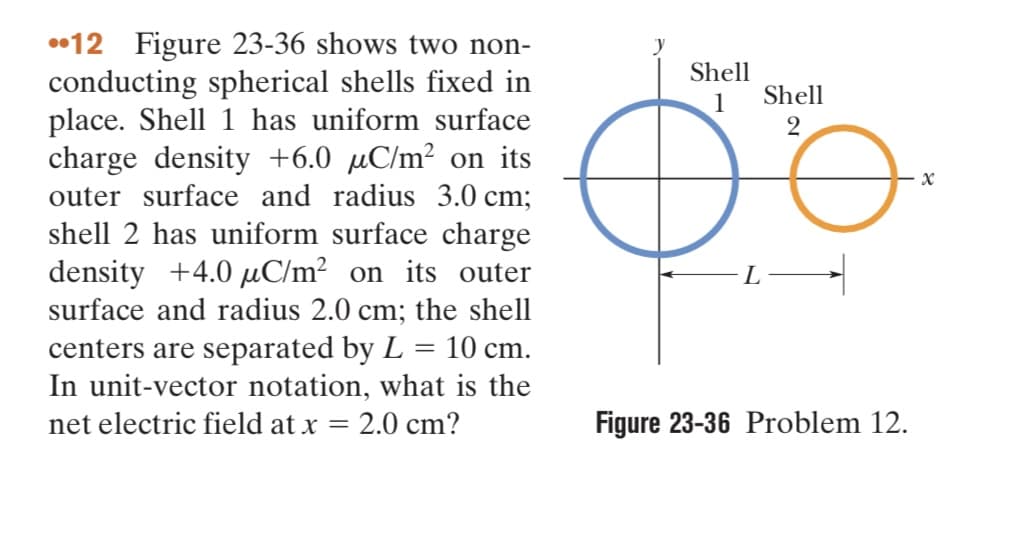12 Figure 23-36 shows two non- conducting spherical shells fixed in place. Shell 1 has uniform surface charge density +6.0 µC/m² on its outer surface and radius 3.0 cm; shell 2 has uniform surface charge density +4.0 μC/m² on its outer surface and radius 2.0 cm; the shell centers are separated by L 10 cm. = In unit-vector notation, what is the net electric field at x = 2.0 cm? Shell 1 Shell 2 L→ Figure 23-36 Problem 12. x
12 Figure 23-36 shows two non- conducting spherical shells fixed in place. Shell 1 has uniform surface charge density +6.0 µC/m² on its outer surface and radius 3.0 cm; shell 2 has uniform surface charge density +4.0 μC/m² on its outer surface and radius 2.0 cm; the shell centers are separated by L 10 cm. = In unit-vector notation, what is the net electric field at x = 2.0 cm? Shell 1 Shell 2 L→ Figure 23-36 Problem 12. x
Related questions
Question
For problem 12, find the x-component of the electric field in kN/C at x = 2.0 cm using a uniform charge density on shell 2 of +6.50urypoC/m2. (5 sig. figs.)

Transcribed Image Text:12 Figure 23-36 shows two non-
conducting spherical shells fixed in
place. Shell 1 has uniform surface
charge density +6.0 µC/m² on its
outer surface and radius 3.0 cm;
shell 2 has uniform surface charge
density +4.0 μC/m² on its outer
surface and radius 2.0 cm; the shell
centers are separated by L = 10 cm.
In unit-vector notation, what is the
net electric field at x = = 2.0 cm?
Shell
1
Shell
2
Figure 23-36 Problem 12.
x

Transcribed Image Text:For problem 23.12, find the x-component of the
electric field in kN/C at x = 2.0 cm using a uniform
charge density on shell 2 of +6.50μxpoC/m². (5
sig. figs.)
Expert Solution
This question has been solved!
Explore an expertly crafted, step-by-step solution for a thorough understanding of key concepts.
This is a popular solution!
Trending now
This is a popular solution!
Step by step
Solved in 3 steps
